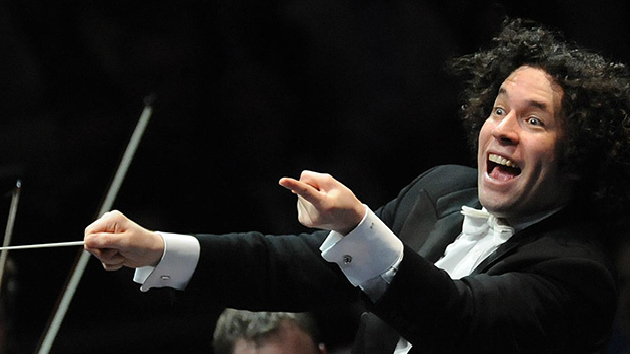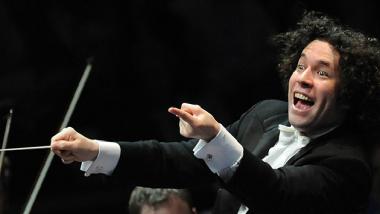
Matias Tarnopolsky, the impresario and director of Cal Performances, once described his eye for performers: “The great (musicians) inhabit the music making. And those are the ones I’m always looking for. That’s my interest: What are they saying? How are they saying it? It’s as much about understanding the music at every level as technique. The most accomplished artists have learned how to allow themselves the freedom to perform.”
Such is Tarnopolsky’s artistry: finding ever-greater performers with the ability to, as he puts it, “connect an audience to the notes on the page,” to attract ever more engaged audiences. It’s a viciously beguiling circle. And you wonder, how can he keep topping himself?
Take this coming season, for example, which opens in the third week of September: The list of performers includes famous names like Dudamel, Tharp, Marsalis, and Ailey. Groups include, among others, the Eco Ensemble, the Kronos Quartet, the Mark Morris Dance Group, the Mariinsky Ballet & Orchestra, The Cloud Gate Dance Theater of Taiwan, the Orquesta Buena Vista Social Club, and Rude Mechanicals.
This year also marks the start of a new effort to further engrain the talent and energy of Cal Performances into the local community. The effort, which grew out of discussions between Tarnopolsky and Rob Bailis, the associate director at Cal Performances, is called Berkeley “Radical”, an acronym for Research And Development Initiative in Creativity, Arts, Learning. The idea is to create programs and residencies each year, oriented to a particular theme. This year the theme is, “Three Strands of Artistic Exploration”. One strand explores the inspirational quality of the natural world; another explores the intersection of artistic performance and technology; and the third examines the evolution of the Baroque tradition.
The inaugural residences are going to Gustavo Dudamel and the Simon Bolivar Symphony and Orchestra, and the program will include symposia, master classes, lecture/demonstrations, a film screening, and open rehearsals. Much of the focus is on generating a new audience of young people who will be both knowledgeable and enthusiastic about the arts. Much of the focus is on generating a new audience of young people who will be both knowledgeable and enthusiastic about the arts.
We asked Tarnopolsky about some of this season’s less well-known performers,
who exemplify his standards. He began with the Ensemble Intercontemporain, the French chamber orchestra founded in 1976, and “a contemporary musical laboratory”, led by Matthias Pintscher. They come to Zellerbach Hall in early November and will play the American premiere of UC Berkeley composer Edmund Campion’s Cluster X, with video by Kurt Hentschläger.
“Here, we have a group of artists,” said Tarnopolsky, “in perfect harmony, from composer to performer to the music director, Matthias Pintscher. This group has been in the forefront of bringing new works to life, and they do it brilliantly, and fully embody the notion of ‘inhabiting the music.’ They’re here for two concerts, (November 6 and 7) along with open rehearsals so that the public will have many opportunities to really get to know them.” The program includes works by Franck Bedrossian; Beat Furrer; Marco Stoppa; Edmund Campion/Kurt Hentschlager; Edgard Varese; Pintscher, himself; and Pierre Boulez.
And then there is Leila Josefowicz, the 37-year-old, ever expressive Canadian violinist and MacArthur Fellow. “She’s incredible,” Tarnopolslky said. “The creativity she brings; the deeply, thought out, yet seemingly spontaneous point of view; it makes this absolutely gorgeous rhapsodic sound.” She makes her debut with Cal Performances with a program that includes Estonian composer Erkki-Sven Tüür’s Conversio (1994) and John Adams’s Road Movies (1995).
Other performers to watch: the legendary Twyla Tharp making her 50th anniversary tour. Said Tarnopolsky, “She is the embodiment of what I’m talking about and another artist where there are no barriers. She fully engages and envelops the music.”
One other performer Tarnopolsky mentioned was David Robertson, who many might regard as the savior of the St. Louis Symphony Orchestra. He’ll be leading his orchestra in Olivier Messiaen’s Des Canyons aux étoiles (1974), which was inspired by Utah’s canyon lands. The program includes images created by photographer Deborah O’Grady.
“This is bringing images into the performance conversation,”said Tarnopolsky, “which is another really powerful statement about opening new doors and finding artists willing to take real risks in the field of sound and go on our stage in new and innovative ways.”
Tarnopolsky attributes the success of Cal Performances to an environment in which artists can do their best work. This is partly the effect of a highly refined and appreciative audience; the artistic context of the local community; and the history of Cal Performances itself. “If an artist feels they’re part of something really meaningful that becomes an important statement — to the audience and to other performers.”

